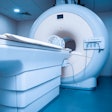
Any physician who has read about the relatively high award in a recent medical malpractice lawsuit has to be thinking about how they can protect their own practice against a similar outcome from a missed communication with a patient or primary care physician. In case you missed it, our recent article describes the lessons learned from this case.
At the heart of the matter is the need for every radiology practice to have a process in place to identify and track patients whose imaging reveals a situation that might not be immediately actionable, but rather one that should be followed and re-evaluated later. While immediate conditions are routinely reported to the patient's ordering physician, the radiologist will often include a recommendation for follow-up that may or may not be properly communicated. When these recommendations are overlooked, they become a liability risk for the radiologist. In fact, radiology is one of the specialties most often cited for "failure to diagnose" according to medical malpractice carriers.1
 Rebecca Farrington from Healthcare Administrative Partners.
Rebecca Farrington from Healthcare Administrative Partners.A senior risk specialist at Coverys, Annemarie Provencher, RN, said in an interview published by the Patient Safety & Quality Healthcare website, "Lack of radiology recommendation follow-up can be due to system errors such as the referring provider failing to order follow-up testing, patients missing scheduled tests or visits, or the provider not receiving the imaging results or failing to read the report." Also, "Implementation of results notification and follow-up tracking systems are important risk strategies that can help increase the number of patients who get the follow-up that radiology reports recommend."
The recent case is a perfect example of how incidental findings can fall through the cracks. Closing the loop is, therefore, essential! However, the term "closing the loop" can describe a variety of scenarios, such as the following:
- A radiology report includes a follow-up recommendation and a message was sent by the radiologist to notify the radiology department to call the primary care physician (PCP) or the patient.
- A radiology report identifies the need for a follow-up and the PCP was notified by the radiologist.
- A radiology report includes a follow-up recommendation, the PCP or the patient was notified, and the patient came back for subsequent imaging.
Each of these scenarios has to be dealt with in a different way, and a radiology practice has to be aware of how each follow-up recommendation has been handled. There are many software products available that purport to close the loop for the radiology practice but, in reality, the integration of several distinct systems is needed to accomplish the task. Here are some of the problems we have identified, along with our recommended solution for building a comprehensive process for your radiology practice.
Problem 1: Identifying and tracking a recommended follow-up
Some software can identify that a follow-up has been recommended by locating terms the radiologist used in dictating the imaging report. The system will search for terms such as "follow-up recommended" or an occurrence of the words "follow-up" close to the word "recommended" or "suggested" in the report. Not all terminology is defined by the software, and not all radiologists use the same terminology. Therefore, a system that looks only for specific terms will often fail to locate a follow-up recommendation.
Some systems work best if the radiologist uses templates because the software is engineered to look for the follow-up dictation in the Impression section of the study. However, some radiologists dictate a follow-up recommendation in the findings section or in the body of the report.
When the system identifies a follow-up recommendation, it will then determine what kind of follow-up is needed so when the patient returns it can mark the follow-up "complete." Some systems look at the current procedure terminology (CPT) codes and if the patient has that code in a subsequent study, then the follow-up is marked complete. However, studies can be improperly marked "complete" due to a mismatch of phrasing or coding.
It is essential that the practice understands how its tracking system works in order to design its processes accordingly.
Problem 2: Communicating the results
The radiology practice will always have the patient's direct contact information available, and this is, of course, the first line of communication. We have found that while 30% of patients respond to letters indicating the need for follow-up, the response rate increases to 40% when the communication goes to their primary care physician (PCP) as well.2 The best practice, therefore, is to obtain the PCP information whenever possible. However, communicating results to the patient's physician is not as straightforward as it might appear at first.
Software can only close the loop if it has the PCP contact information on file. In an imaging center or community hospital outpatient department, the PCP is usually identified in the patient's chart. However, for patients who were seen in the emergency department (ED), the software will only be able to get the PCP information that is available in the hospital's electronic medical record (EMR) system, registration system, or the RIS at the time they arrived at the ED.
If the patient was a traveler to the area, the PCP will not be found in the hospital's systems, especially in larger urban hospitals. One solution might be to include a request for PCP contact information in any communication with the patient, whether it is for clinical or billing purposes. When the practice uses an online patient portal, PCP information should always be requested as part of the patient's profile.
Problem 3: Data anomalies that cause inaccuracy
When recommendations and follow-up visits do not correlate as expected, the loop is not closed! For example, suppose a patient needing a follow-up chest CT scan for a lung nodule that was incidentally found presents to the ED at a later date for something nonlung-related, and a CT scan of the chest is performed. In some systems, this occurrence would cause the follow-up recommendation to be marked as "complete" in the software, and the patient would drop off the radar without having the lung nodule properly evaluated over time.
Similarly, the use of obscure language for dictating a follow-up or describing an "incidentaloma" that is not built into the software will cause a mismatch. Finally, corrupt speech files often cause incorrect dictation. In either case, the patient will drop off the radar and not be properly followed.
Solution
We recommend layering solutions to achieve the goal of accurately identifying and tracking incidental findings and follow-up recommendations. No single system can be 100% accurate, and no single system can perform all of the required steps accurately. Therefore, whenever you hear the term "close the loop," be sure to ask lots of questions about exactly what it means and how it is accomplished.
The following are some things to consider:
- Artificial intelligence (AI) might be used to flag incidental findings in the PACS prior to reading the study, but always have a radiologist read the study.
- Consider implementing a natural language program (NLP) or machine learning system that can read through reports to identify follow-ups that have been dictated.
- If you decide to use templates, be sure to use more than one. Give your radiologists choices that suit their individual dictation styles.
- Refresh speech files every three to six months. These files can become corrupted and cause inaccurate dictation. This makes it harder to find follow-up recommendations.
- Utilize an analytics program such as our Deep Dive Analytics system that can be customized to find your data anomalies.
References
- According to Coverys Red Signal Report, "a review of Coverys claims (n = 10,692) that closed between 2013 and 2017 provides insight into radiology-related risks that have been the most prevalent in the clinical environment, and may still be at play in the current practice. Claims naming a radiologist (n = 595) often involve significant patient harm and most frequently allege an incorrect or delayed diagnosis of a patient's condition" (bold emphasis added).
- Lim PS, Schneider D, Sternlieb J, et al. Process improvement for follow-up radiology report recommendations of lung nodules. BMJ Open Quality, April 24, 2019. https://bmjopenquality.bmj.com/content/8/2/e000370. Accessed October 3, 2019.
Rebecca Farrington serves as the chief revenue officer for Healthcare Administrative Partners. She has more than 20 years of experience in healthcare sales and management roles, focusing on hospital-based and physician revenue cycle management.
The comments and observations expressed are those of the author and do not necessarily reflect the opinions of AuntMinnie.com.



















